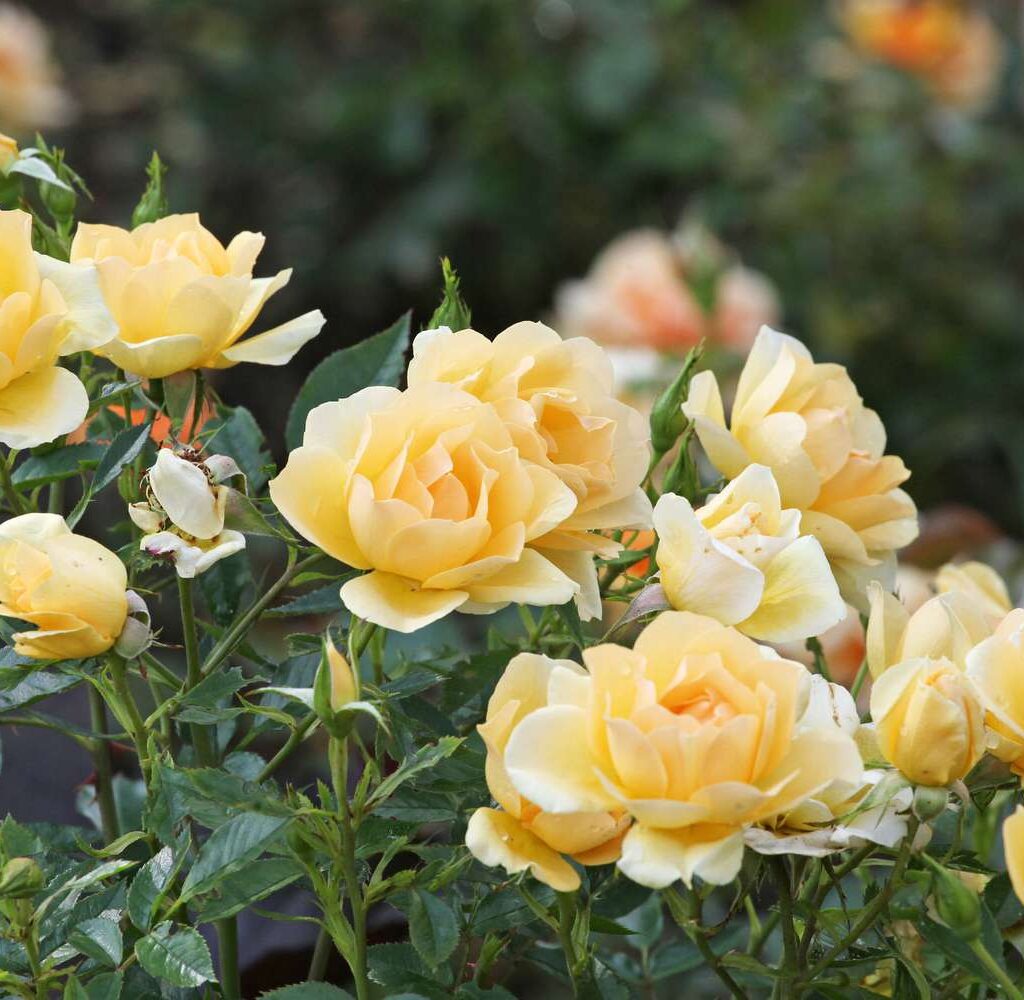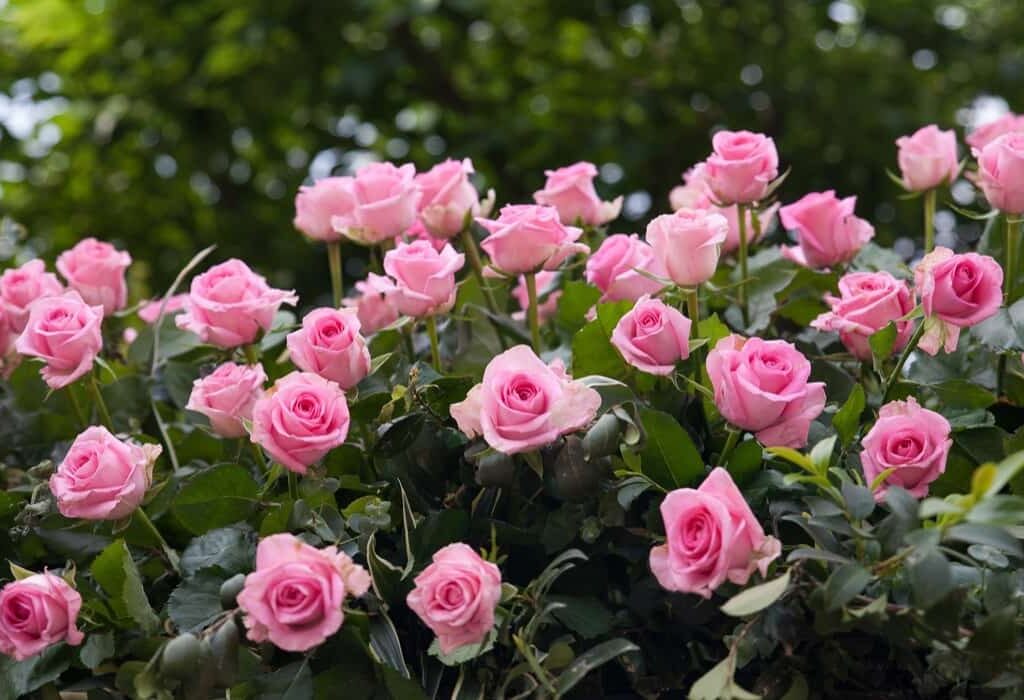Roses are timeless symbols of love, beauty, and elegance. From backyard gardens to decorative borders, these flowering shrubs offer endless charm and fragrance to any outdoor space. The good news? Planting and growing rose bushes is much easier than you might think — as long as you follow a few simple guidelines.
Whether you’re a gardening newbie or looking to expand your blooming collection, this guide will walk you through how to plant and grow rose bushes easily — from choosing the right variety to keeping them healthy and thriving season after season.

Why Grow Rose Bushes?
Before we dig in, let’s talk about why rose bushes deserve a spot in your garden:
- Beautiful, colorful blooms in a wide range of hues.
- Fragrant flowers that can scent your entire yard.
- Versatile uses: cut flowers, hedges, climbing walls, or ground covers.
- Pollinator-friendly plants that attract bees and butterflies.
- Long-lasting perennials with the right care.
And best of all — modern hybrid roses are hardier and lower maintenance than old-fashioned varieties.

Choosing the Right Rose Bush
The first step in planting roses successfully is selecting the type of rose bush that best suits your space, climate, and care preferences.
Types of Roses:
- Hybrid Tea Roses: Large, single blooms on long stems; ideal for cutting.
- Floribunda Roses: Clusters of medium-sized flowers; perfect for borders.
- Grandiflora Roses: A cross between hybrid tea and floribunda with large blooms and clustered flowers.
- Climbing Roses: Long canes that need support; great for trellises and fences.
- Shrub Roses: Hardy, bushy varieties perfect for hedges and mixed beds.
- Miniature Roses: Compact plants ideal for containers or small spaces.
Tip: Choose disease-resistant, hardy varieties suited to your climate zone for easier care.

How to Buy Rose Bushes
Roses come in two main forms:
- Bare-Root Roses: Sold dormant with no soil around the roots; planted in early spring.
- Container-Grown Roses: Sold in pots; available throughout the growing season.
Bare-root roses are more affordable and easier to transport, while container-grown roses offer the advantage of instant garden impact.

How to Plant Rose Bushes Step-by-Step
Best Time to Plant:
- Early spring (after the last frost) for bare-root roses.
- Spring through early fall for container-grown roses.
Choose the Perfect Spot:
Roses love:
- Full sun (6-8 hours daily)
- Well-drained soil rich in organic matter
- Good air circulation to prevent disease
Avoid areas with standing water or dense shade.
Tools and Materials:
- Shovel
- Compost or aged manure
- Mulch
- Watering can or hose
- Gardening gloves
Planting Instructions:
1. Prepare the Soil
- Dig a hole about 18 inches wide and 18 inches deep.
- Mix the excavated soil with compost or aged manure.
- If planting bare-root roses, form a small mound of soil in the hole’s center.
2. Soak Bare-Root Roses (if applicable)
- Soak the roots in a bucket of water for 4-6 hours before planting.
3. Position the Rose
- Place the rose bush in the hole.
- The bud union (swollen area at the base of the stems) should be 1-2 inches below the soil line in colder climates and at soil level in warmer zones.
4. Backfill and Water
- Fill in the hole halfway with soil mix.
- Water thoroughly to remove air pockets.
- Finish filling and gently tamp down the soil.
- Water again.
5. Mulch
- Add a 2-3 inch layer of organic mulch (like bark chips or shredded leaves) around the base, leaving space around the stems.
Caring for Rose Bushes
Once planted, your rose bushes need regular attention to flourish.
Watering:
- Deeply water roses once or twice a week.
- Increase frequency during hot, dry weather.
- Avoid overhead watering to prevent fungal diseases.
Tip: Water early in the day so foliage can dry before nightfall.
Feeding:
Roses are heavy feeders. Follow this schedule:
- Early spring: Apply a balanced fertilizer when new growth appears.
- Midseason: Use a fertilizer high in phosphorus to encourage blooms.
- Late summer: Stop fertilizing to allow plants to prepare for winter.
You can also use compost tea, fish emulsion, or organic rose food for natural nourishment.
Pruning:
Pruning improves air circulation and encourages healthy new growth.
- Prune in early spring before new growth emerges.
- Remove dead, diseased, or crossing branches.
- Cut stems back to outward-facing buds.
- For hybrid teas, reduce stems to about 12 inches tall.
- For shrub and floribunda roses, shape as needed.
Use sharp, clean pruning shears and wear gloves.
Common Pests & Problems (and How to Fix Them)
Even healthy roses can encounter issues. Here’s what to watch for:
| Problem | Symptoms | Solution |
|---|---|---|
| Aphids | Clusters of tiny green bugs | Spray with water or insecticidal soap |
| Black Spot | Black spots on leaves | Remove affected leaves; use fungicide |
| Powdery Mildew | White powdery coating on leaves | Improve air circulation; apply fungicide |
| Japanese Beetles | Chewed leaves and flowers | Handpick or use neem oil spray |
Tip: Encourage beneficial insects like ladybugs and lacewings to help control pests naturally.
When and How to Harvest Roses
If you’re growing roses for bouquets:
- Cut flowers early in the morning.
- Use sharp scissors or pruning shears.
- Cut stems at a 45° angle just above a set of leaves.
- Place immediately in water.
Preparing Roses for Winter
In colder regions, winter protection is essential:
- Stop fertilizing in late summer.
- Mulch heavily (8-12 inches) around the base after the first frost.
- In harsh areas, cover with burlap, straw, or rose cones.
Final Thoughts
Growing rose bushes doesn’t have to be intimidating. With the right preparation, a sunny spot, and consistent care, you’ll be rewarded with lush blooms, delightful fragrances, and a garden centerpiece to be proud of.
Quick Recap:
- Pick the right rose type for your space.
- Plant in sunny, well-drained soil.
- Water deeply and regularly.
- Fertilize for continuous blooms.
- Prune to keep plants healthy and shapely.
- Watch for pests and treat promptly.
- Protect during winter.
In no time, your rose bushes will thrive, providing you with gorgeous flowers and endless garden charm.





Leave A Comment